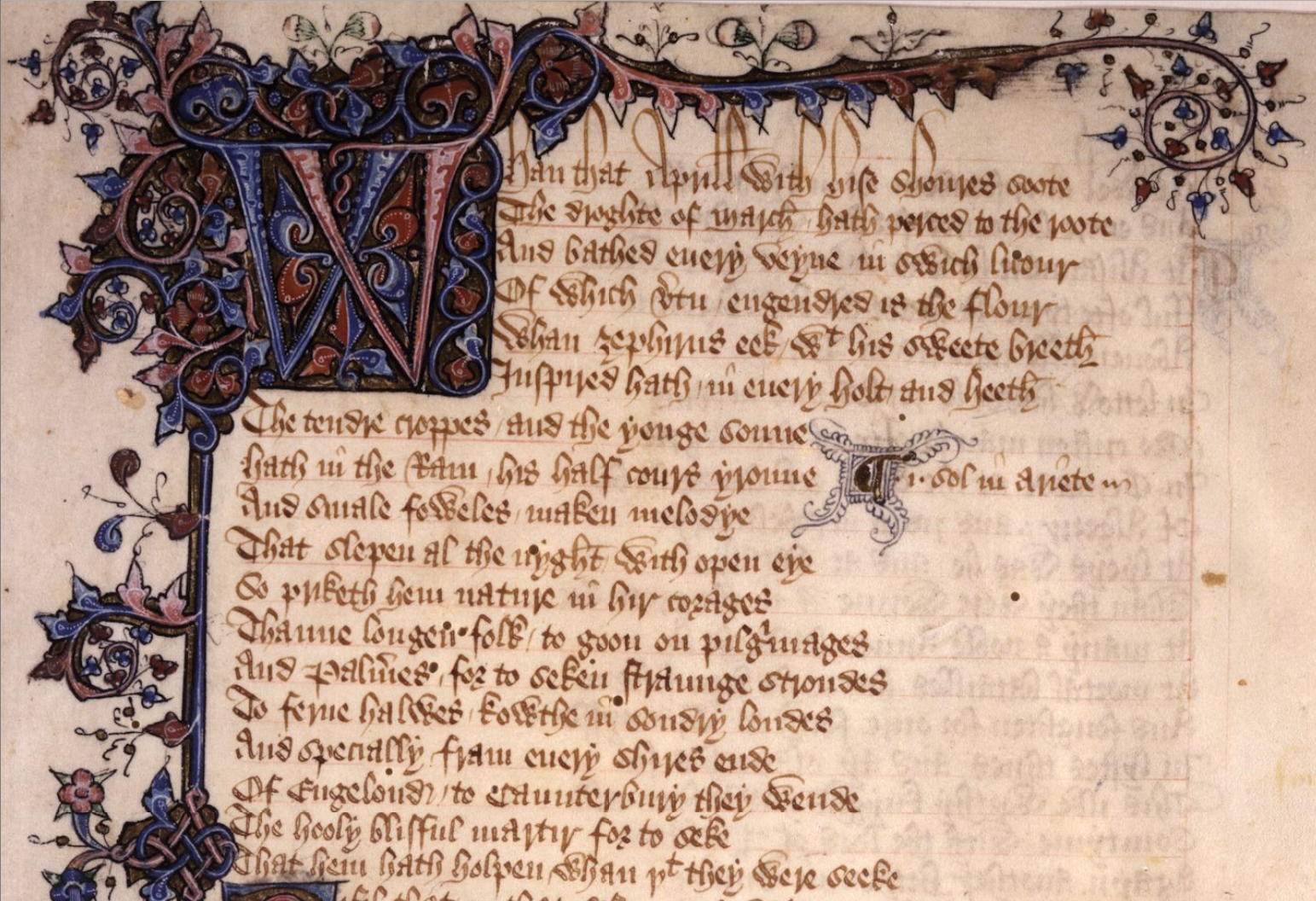Chaucer の The Canterbury Tales の "The General Prologue" から,あまりにも有名な冒頭の1文を引く( ll. 1--18 from The Riverside Chaucer )
Whan that Aprill with his shoures soote
The droghte of March hath perced to the roote,
And bathed every veyne in swich licour
Of which vertu engendred is the flour;
Whan Zephirus eek with his sweete breeth
Inspired hath in every holt and heeth
The tendre croppes, and the yonge sonne
Hath in the Ram his half cours yronne,
And smale foweles maken melodye,
That slepen al the nyght with open ye
(So priketh hem nature in hir corages),
Thanne longen folk to goon on pilgrimages,
And palmeres for to seken straunge strondes,
To ferne halwes, kowthe in sondry londes;
And specially from every shires ende
Of Engelond to Caunterbury they wende,
The hooly blisful martir for to seke,
That hem hath holpen whan that they were seeke.
初めて読んだ中英語の文章がこの文だったという人も多いのではないだろうか.格調の高い長い書き出しだが,基本的な文の構造としては Whan . . . Thanne の相関構文であり明快だ.この文の味わい方は読者の数だけあるのかもしれないが,今回は Burnley (46--47) に従って時制 ( tense ) と相 ( aspect ) に注目した読み方を紹介したい.
まず,用いられている動詞の時制はほぼ現在で統一されている(唯一の例外は最後の行の were のみ).語りの前提のない書き出しでの現在形使用は,普遍性を感じさせる.4月が訪れ,自然が目覚め出すと同時に,人もやむにやまれずカンタベリーへの巡礼を思い立つ,ということが毎年のように繰り返されていることが暗示される.自然の循環,季節の回帰を想起させる,高らかな謳いだしである.
相 ( aspect ) に目を移すと,Whan 節の内部では主として完了形が用いられている.これは Whan 節とそれに続く Thanne 節の内容が時間的に間をおかずに継起していることを示すとともに,単に時間的継起のみならず因果関係をも示唆している.人々が巡礼を思い立つのは,他ならぬ4月の自然の引き金によるものなのだ.長い文でありながら,Whan 節と That 節の内容が緊密に結びついているのは,完了形の力ゆえである.
まとめれば,この冒頭の文では「自然の目覚め→人々の目覚め」という因果関係が毎年のように繰り返されるという普遍性を謳っていることになる.この文の後には "Bifil that in that seson on a day," と過去形での語りが始まるので,対照的に冒頭の現在時制とそれが含意する普遍性が際立つことになる.以上,有名な冒頭を時制と相によって読んでみた.
(後記 2022/05/03(Tue):Voicy 「英語の語源が身につくラジオ (heldio)」にて,この1節を中英語の発音で読み上げていますのでご参照ください.「中英語をちょっとだけ音読 チョーサーの『カンタベリ物語』の冒頭より」です.)
(後記 2023/10/10(Tue):Ellesmere MS の冒頭部分の画像は です.)
です.)
・ Burnley, David. The Language of Chaucer. Basingstoke: Macmillan Education, 1983. 13--15.